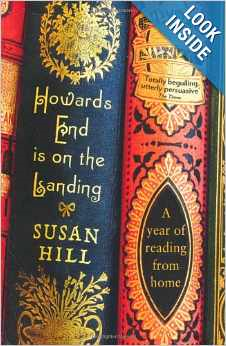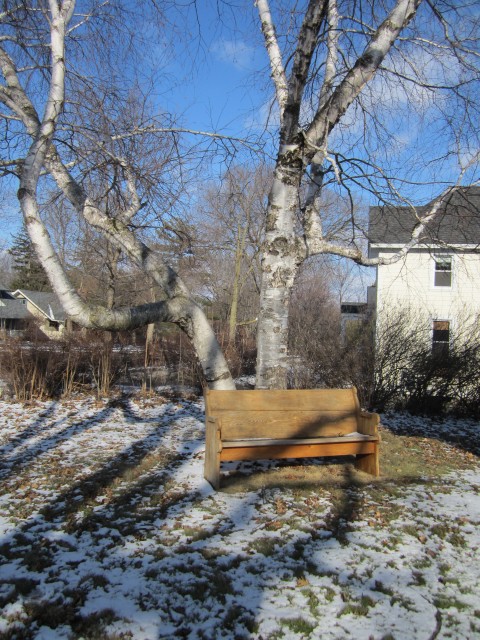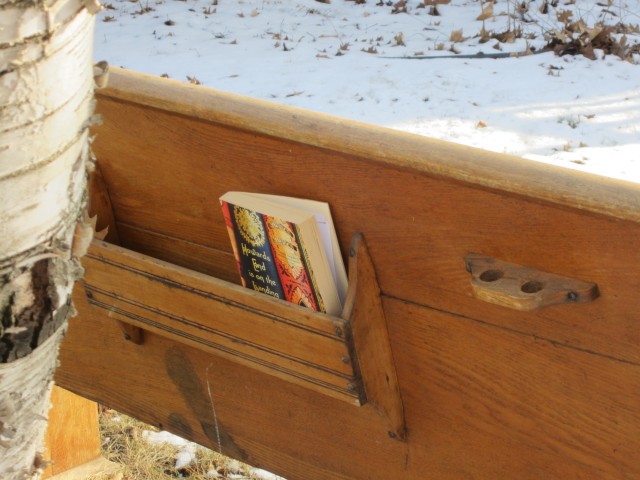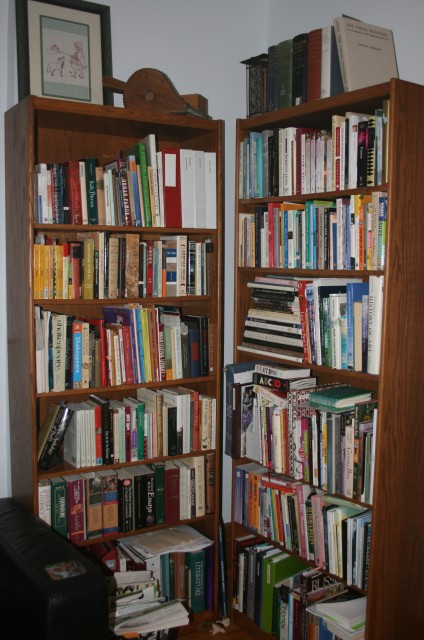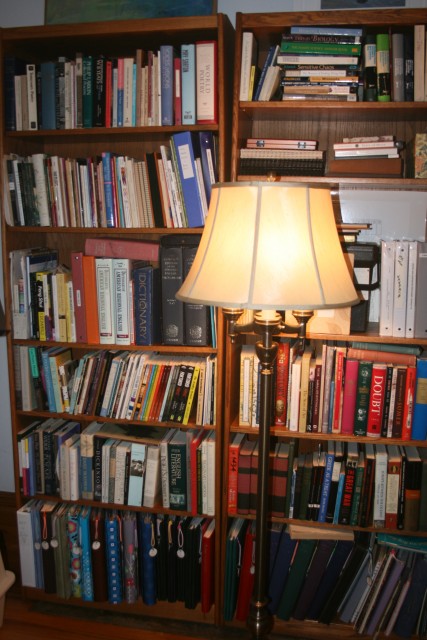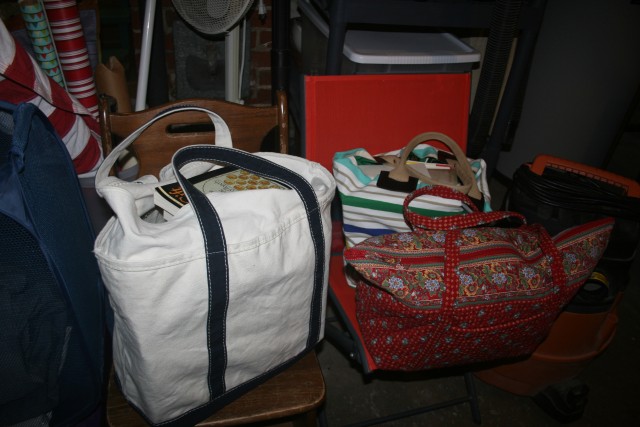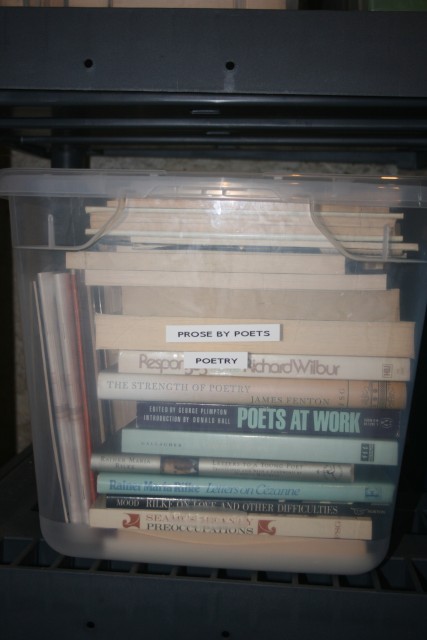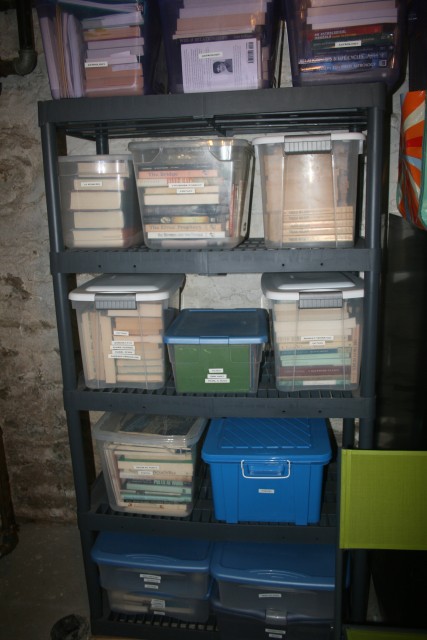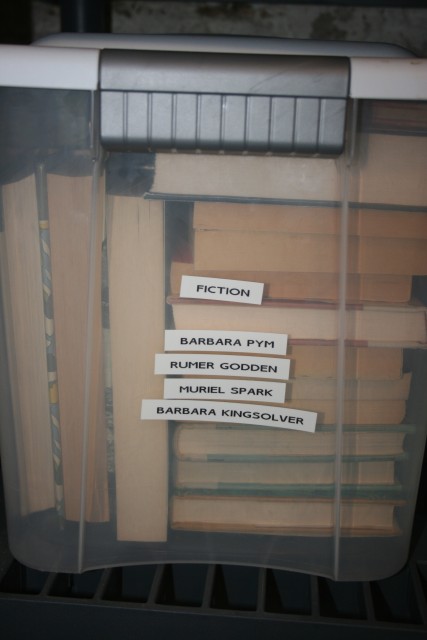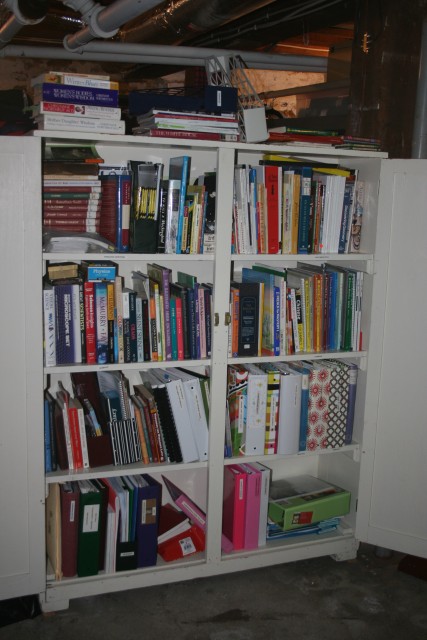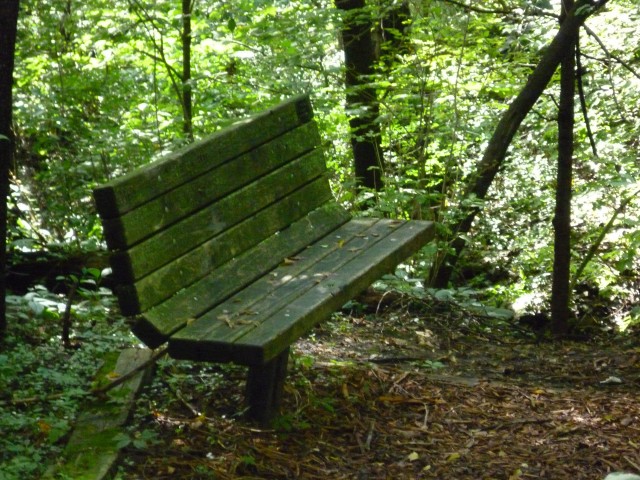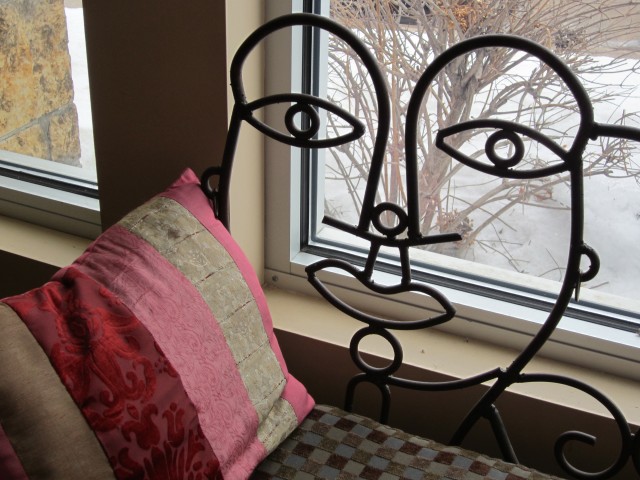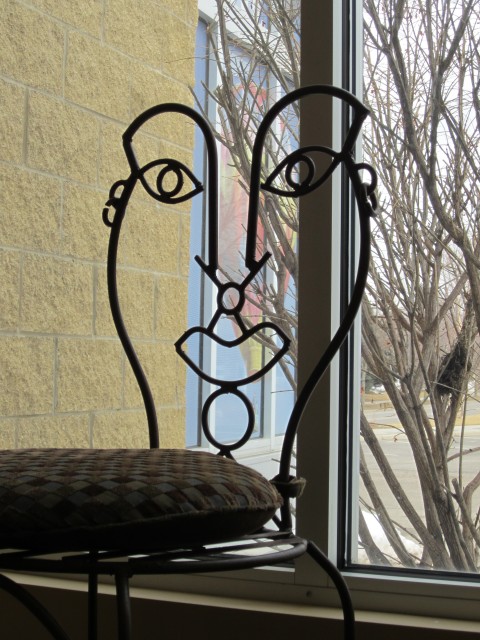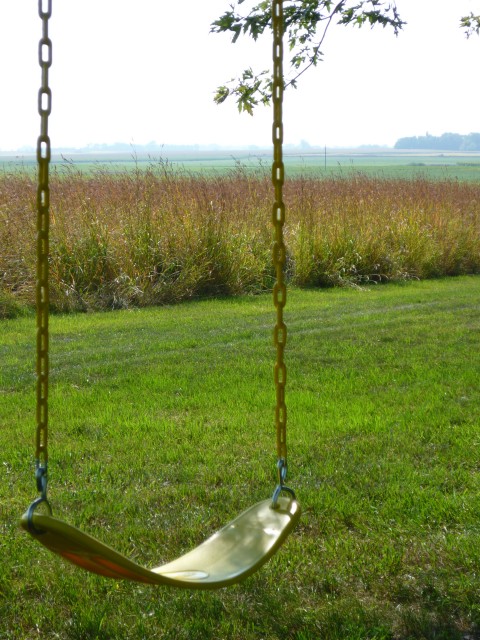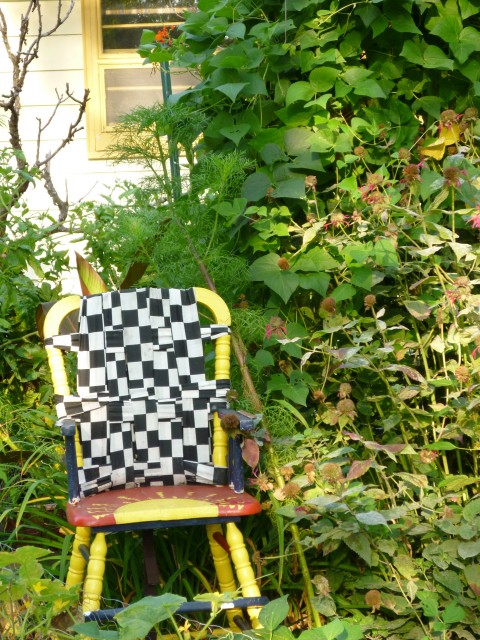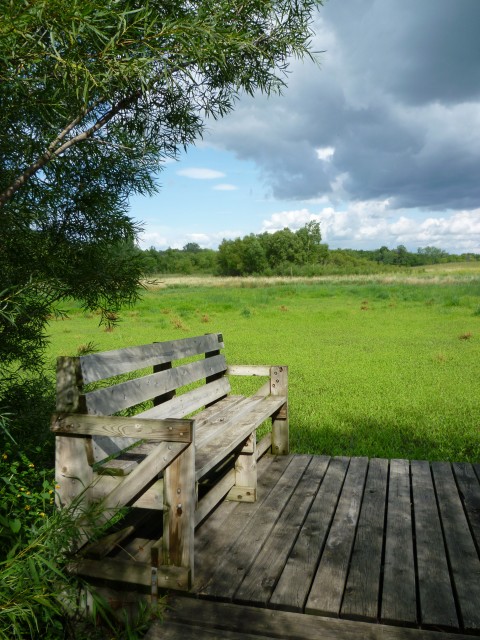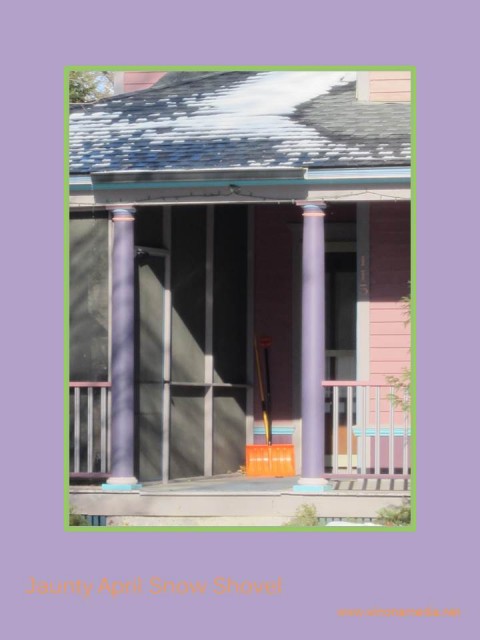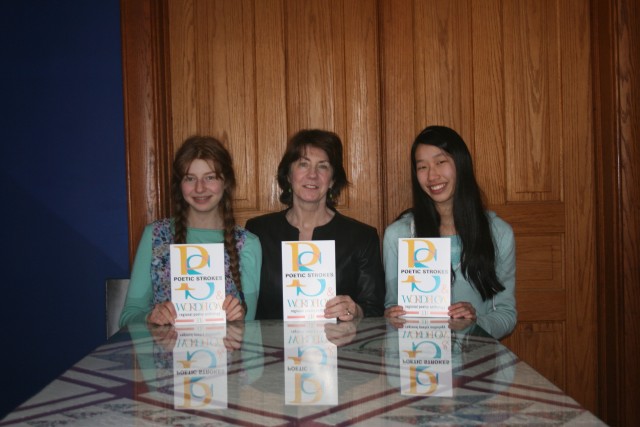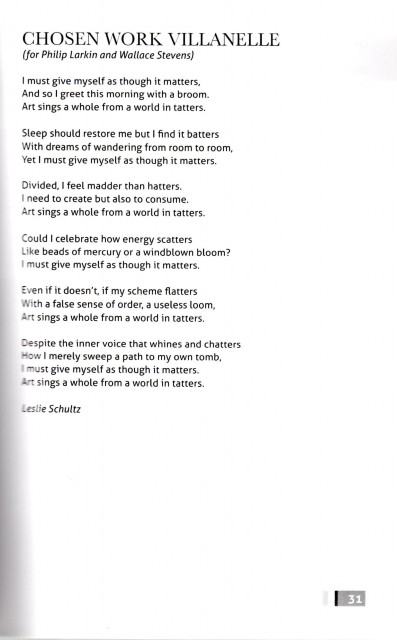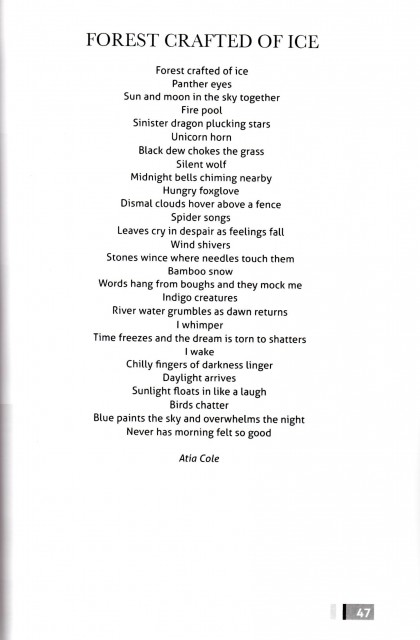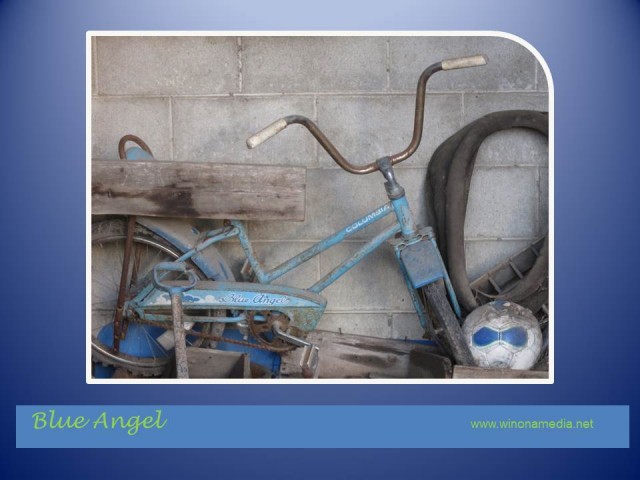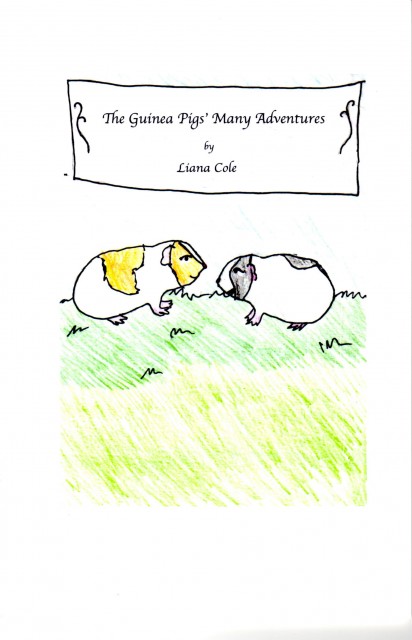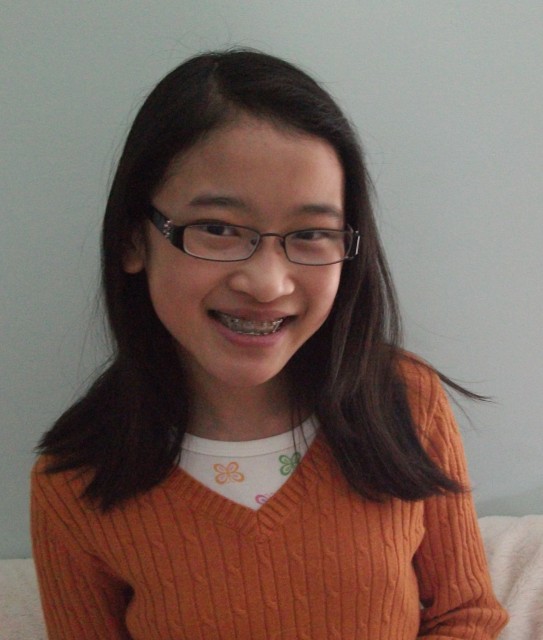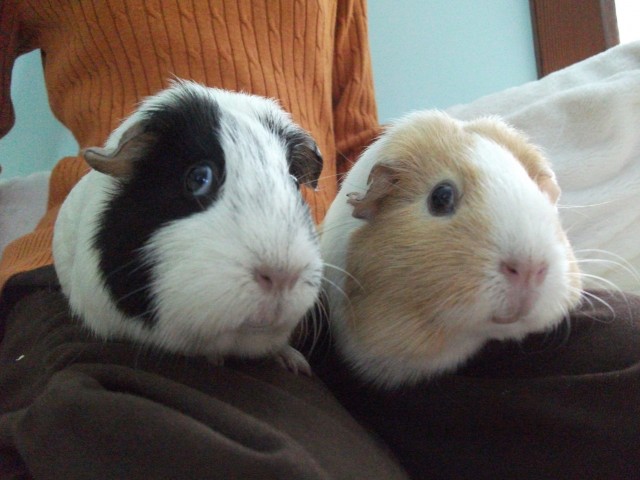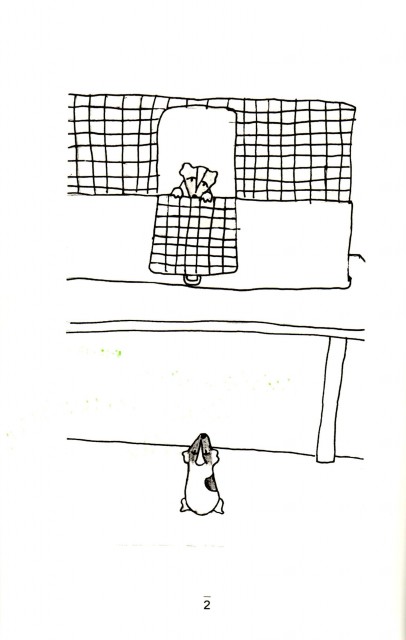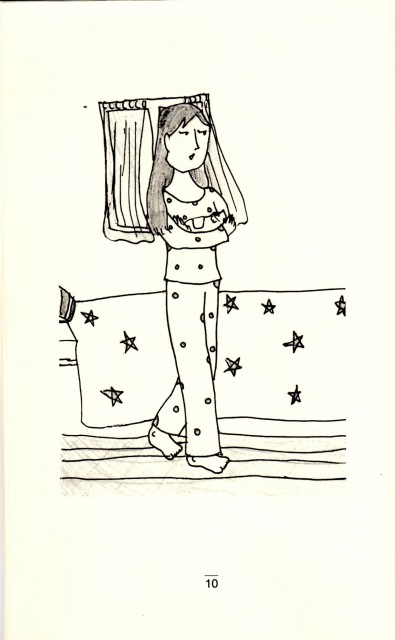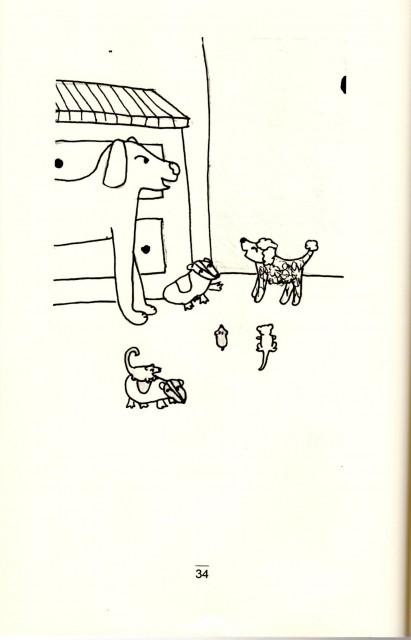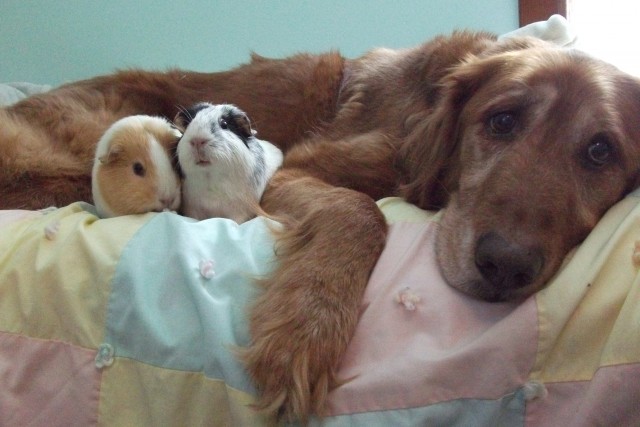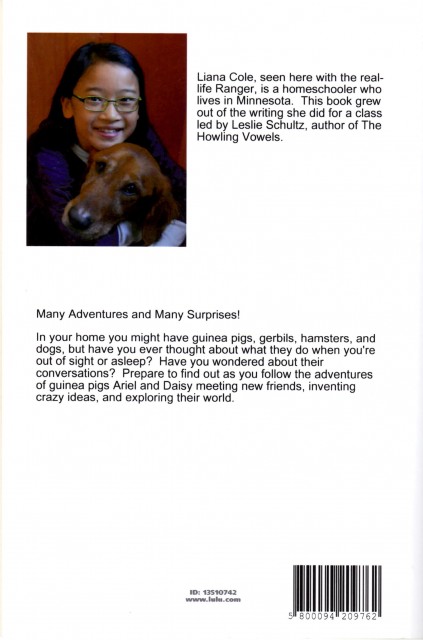Last week, as I waited on the top of the St. Olaf hill for Julia to complete her science class in Regent’s Hall, I enjoyed a sunny evening and a good book. I was re-reading a delightful book on … re-reading! It is by Susan Hill and is titled Howard’s End is on the Landing. This book is a kind of an autobiography in books and reading by a British woman of letters, publisher, and author of many novels. The book chronicles a year in her life in which she decides on a whim to spend the next four seasons eschewing new books (for the most part) and concentrating on re-reading books of all kinds from the storehouse she has laid up over a lifetime on the shelves in her own home. Most chapters focus on a specific kind of book — novels by women, picture books, diaries. Each book considered occasions thoughts of who Hill was and what she was thinking when she first read the book under consideration.
I was deep into one of the last chapters, “Reading for the Soul”, on spiritual autobiographies, when Julia got to the car. We headed down St. Olaf hill toward home. No doubt my sensitivities were heightened by my recent reading. This time, I really noticed what I had seen dozens of times before: a church pew resting in a front garden under a birch tree.
The sun spot-lit it. Julia waited patiently while I pulled over to take some photographs. That’s when I realized that of all the benches and garden chairs in Northfield, this one had the perfect perching place for the book in my hand.
I was amused. I thought Susan Hill might have been, too, had she been there.
Her thought-provoking book was given to me by a friend with whom I have shared many, many intense conversations about reading. We had thought we might be able to emulate Hill, who concludes her book — her year of re-reading — with a mental exercise: selecting a “Final Forty” list of books with care, so that in the unlikely event no new books ever came into her life, these books would provide enough range and sustenance for the rest of her life.
It is a daunting thing to contemplate, culling one’s books to that degree. And Hill’s review of her library has caused me to add to mine! Recently, I invested in The Rattle Bag, a delightful anthology of poetry for children co-edited by Seamus Heaney and Ted Hughes, and I also bought a copy of the out-of-print Library Looking Glass: A Personal Anthology by David Cecil, a work unlike any other I’ve seen, rather like an annotated scrapbook of wonderfully wide-ranging quotes across 1,000 years of western (mostly British) literature arranged by topics such as “Art”, “The Government of the World”, “Moon”, and “Prose Poems from Novels”.
Ahem. You see I digress.
As I look at my (already culled!) stacks, I see…
Books on the shelves of our little library…
Three bags of books I am waiting to read for the first time–fiction, non-fiction, and books of poetry and poetics…
Books I have read and plan to re-read…
Books that might be useful for homeschooling…
Since learning of Susan Hill’s project, I have considered the idea of coming up with some version of an essential reading list. I don’t know that I would do a list of Final Forty. But…maybe a Sea Chest of Worthy Books? Maybe an Essential Shelf? Or possibly three shelves: the Shelf of Enduring Utility, the Shelf of Honor and Influence, the Shelf of Abiding Pleasure? Could I reduce (even theoretically) any more than I have now?
I am still wrestling with this imaginative self-assignment in odd moments. I find the idea of selection (and exclusion) rather stressful, yet my small adventure left me thinking about how restful it is to re-read. For me, it is more meditative than first reading–that has more thrill of discovery. Re-reading always contains more reflection, especially if there are notes in the margin (there often are in my books) or if something falls out from the pages (ditto) or if I can recall where I was on my life’s journey when I picked up this companion to carry with me. Almost always, I can remember where was when I first beheld the book, the plan or impulse that triggered the purchase, or who gave me the book and with what expectation.
Will I ever be able to distill my collection — even mentally, even theoretically — into a few mere shelves? Goodness knows! I am still mulling. If I manage it, I shall report back here. Meanwhile, I leave you with a few images of outdoor seats from places I have walked often.
Challenging and exciting and demanding as they can be, books are also resting places from the particular pressures of daily life, and for me, at least, reading is a sedentary pleasure. (I do not read while pedaling furiously on an exercise bike.) Each of these seats looks inviting–a place for rest, reflection, and even re-reading. I also invite you to share thoughts about what books you have re-read. Here’s my question: was it the same book? Or, as you changed, did the book appear to you in a different light? If so, was it improved (as you, no doubt are) or was is now found wanting?
Happy Reading and Re-reading!

